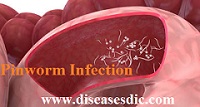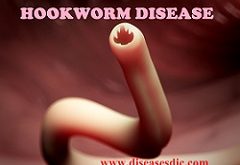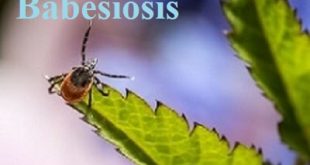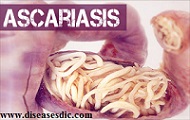Introduction Pinworm Infection (Enterobrosis) is a benign intestinal disease caused by a short spindle-shaped worm 1/4 -1/2 inches long and whitish color. It may occur in both children and adults and usually infects the whole family. The adult worms reside in the colon of the host and the females deposit …
Read More »Hookworm Disease – Risk Factors, Complications, and Prevention.
Introduction Hookworm disease is a parasitic disease caused by the entry of larvae (immature form) of the hookworm, most commonly, Necator americanus, into a human host. People usually get hookworm disease by walking barefoot in soil that is contaminated with the feces of an infected person. Transmission You can get …
Read More »Cryptosporidiosis – Causes, Treatment, and Prevention.
Definition Cryptosporidiosis is a diarrheal disease caused by microscopic parasites, Cryptosporidium, that can live in the intestine of humans and animals and is passed in the stool of an infected person or animal. Both the disease and the parasite are commonly known as “Crypto.” The parasite is protected by an …
Read More »Babesiosis – Risk Factors, Causes, Treatment, and Prevention.
Definition Babesia is a tiny parasite that infects your red blood cells. Infection with Babesia is called babesiosis. The parasitic infection is usually transmitted by a tick bite. Babesiosis often occurs at the same time as Lyme disease. The tick that carries the Lyme bacteria can also be infected with …
Read More »Trichinosis – Risk factors, Diagnosis, Treatment, and Prevention.
Definition Trichinosis is a disease caused by parasitic roundworms (nematodes) that can infect and damage body tissues. Nematodes are a major division of the helminth family of parasitic worms (for example, Trichinella spiralis). When ingested, these parasitic worms can pass through the intestinal tract to invade other tissues, such as …
Read More »Opisthorchiasis – Causes, Symptoms, Diagnosis, and Treatment.
Definition Opisthorchiasis is an infection caused by either of the two parasite worms, the cat liver fluke, or scientifically called Opisthorchis felineus (also known as Opisthorchis tenuicollis), or the Southeast Asian liver fluke (called as Opisthorchis viverrini). The term “fluke” means flatfish, since these parasites are flat. Opistorhoz in fish …
Read More »Ascariasis – Transmission, Manifestations, and Prevention.
Introduction Ascariasis is a parasitosis of the small intestine caused by one of two worm nematodes (family Ascarididae): Ascaris lumbricoides Linnaeus, 1758, which typically infects humans, and A. suum Goeze, 1782, which is generally found in pigs. The two species are morphologically very similar and both can cause cross infections …
Read More » Diseases Treatments Dictionary This is complete solution to read all diseases treatments Which covers Prevention, Causes, Symptoms, Medical Terms, Drugs, Prescription, Natural Remedies with cures and Treatments. Most of the common diseases were listed in names, split with categories.
Diseases Treatments Dictionary This is complete solution to read all diseases treatments Which covers Prevention, Causes, Symptoms, Medical Terms, Drugs, Prescription, Natural Remedies with cures and Treatments. Most of the common diseases were listed in names, split with categories.







